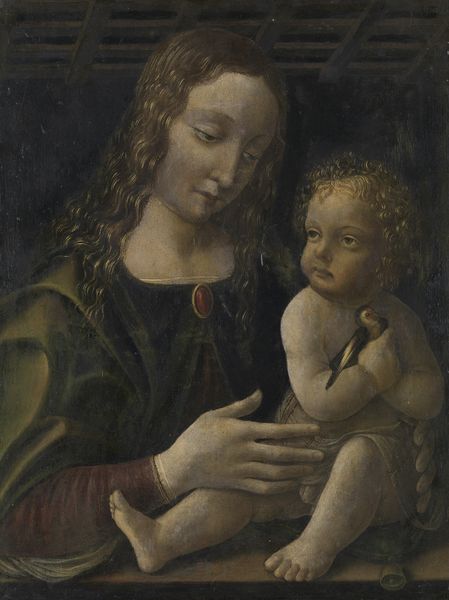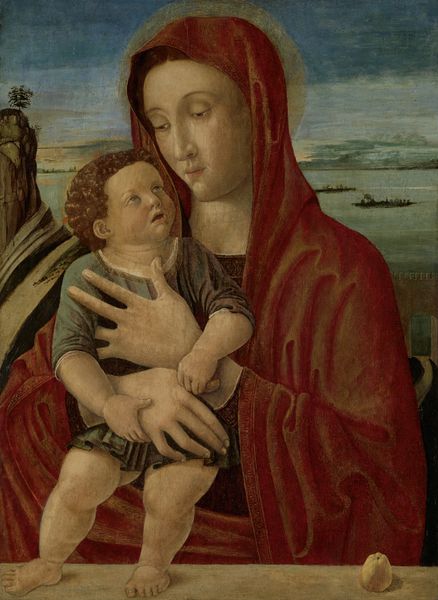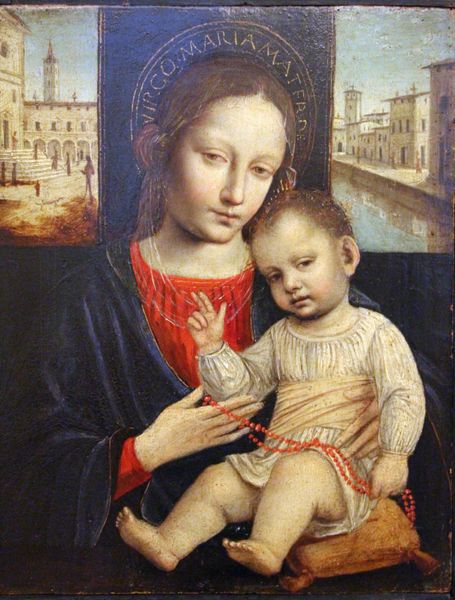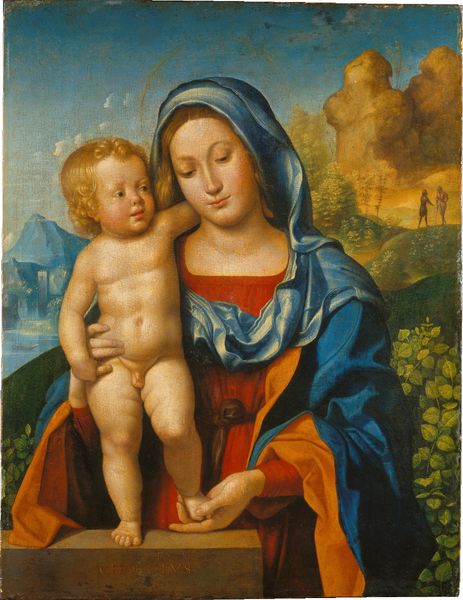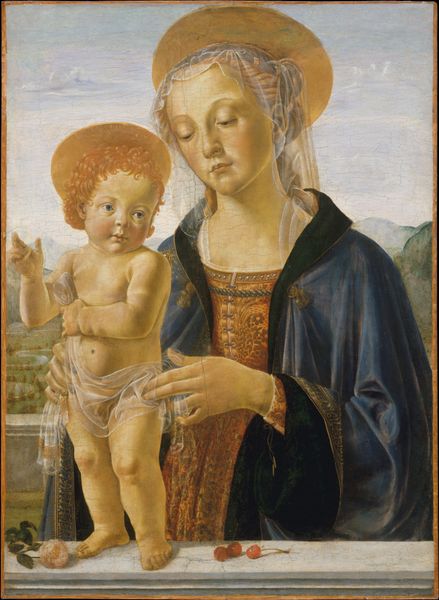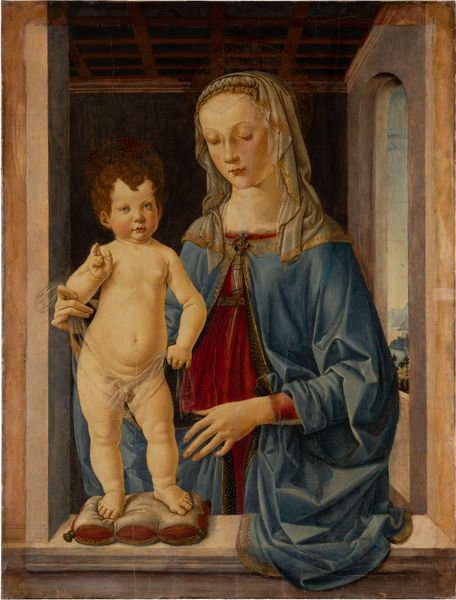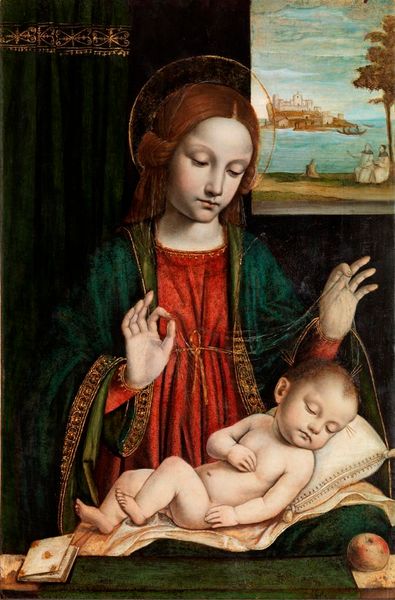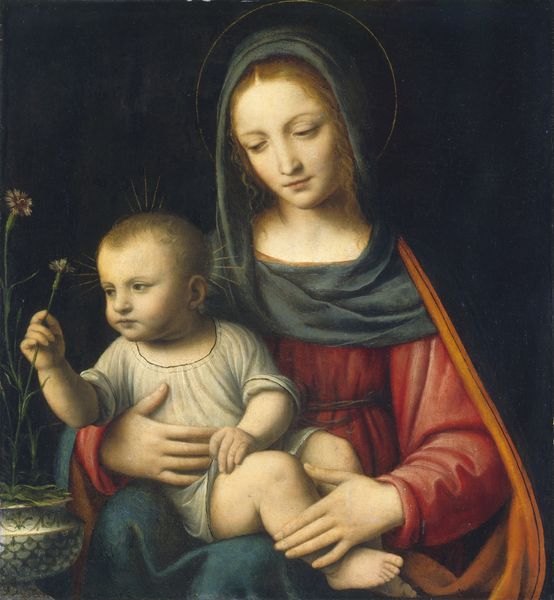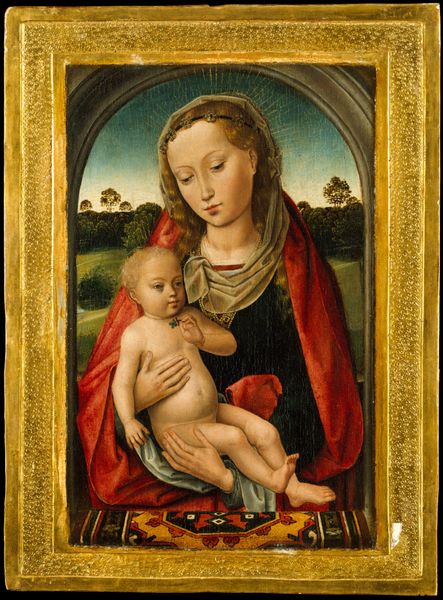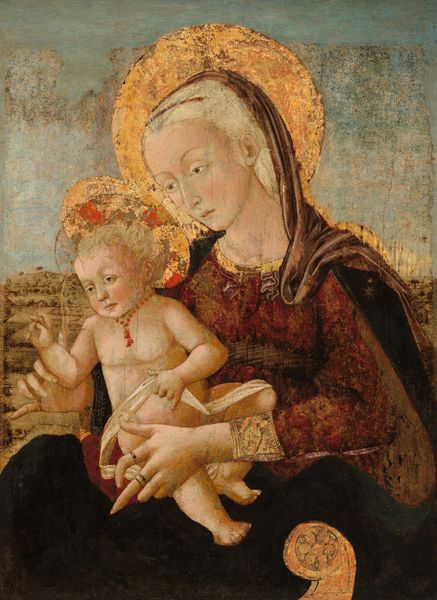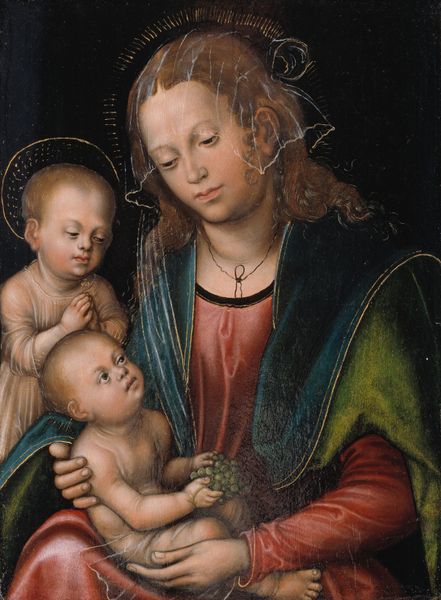
painting, oil-paint
#
portrait
#
painting
#
oil-paint
#
figuration
#
oil painting
#
history-painting
#
academic-art
#
italian-renaissance
Copyright: Public domain
Curator: Let’s turn our attention to "The Virgin and Child," an oil painting dating back to approximately 1490. It currently resides here at the National Gallery. What are your first impressions? Art Historian: My initial reaction is that of serene stillness; a portrait seemingly designed to project an image of holy tranquility within a precise historical moment of faith. Curator: Notice the almost geometric arrangement of the figures, the Madonna’s face, her blue robe forming a stable pyramid, all contained within a vertical rectangle. How does the setting function to create a contrast with the two central figures? Art Historian: It seems there's a distinct social separation implied. The clarity of the Madonna and child contrast with the blurred, almost dreamlike background populated with figures. Consider the patrons during the Renaissance— this work served not just as a devotional tool, but also as a representation of societal ideals and the Church’s influence. Curator: And the gaze; both figures avert theirs, drawing us into a personal, meditative space, even despite the scale that would otherwise denote public worship. The contrast between her face and the dark background intensifies this. How does this contrast function in conjunction with the use of religious symbolism? Art Historian: Symbolism abounds; consider the rosary beads that the child Jesus holds, as well as the open book at the bottom left corner, elements that root the painting firmly in its religious context. They would have been instantly readable symbols to contemporary viewers reinforcing doctrine. We need to think about how such devotional imagery normalized religious piety. Curator: Yet, observe how the artist uses light and shade to give form, yes, but also to create depth. A rich backdrop plays beautifully against the subjects as well as creating balance overall. A kind of harmonious visual rhetoric between light, figures, form, and faith? Art Historian: It absolutely reflects a specific historical narrative; artistic choices shaping perceptions of devotion and power, mirroring the church's aims during the era. Curator: An exquisite articulation of form and faith meeting. Art Historian: Indeed. Viewing through its layered historical significance adds depth to my understanding.
Comments
No comments
Be the first to comment and join the conversation on the ultimate creative platform.

